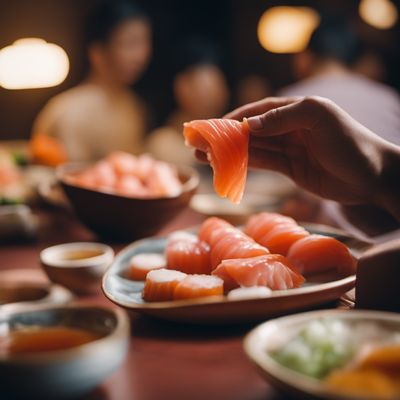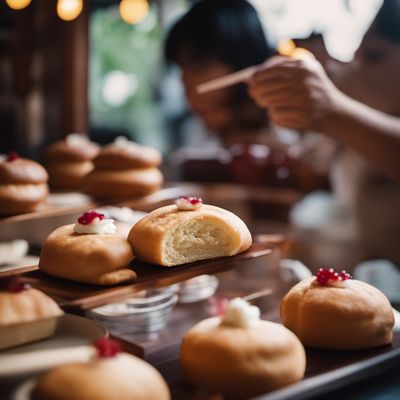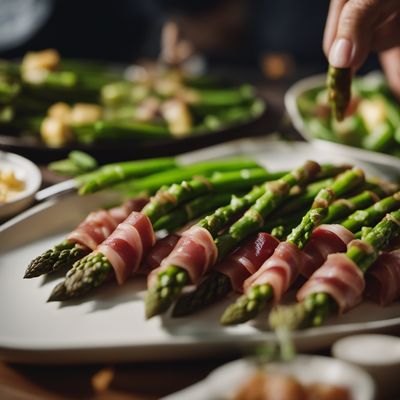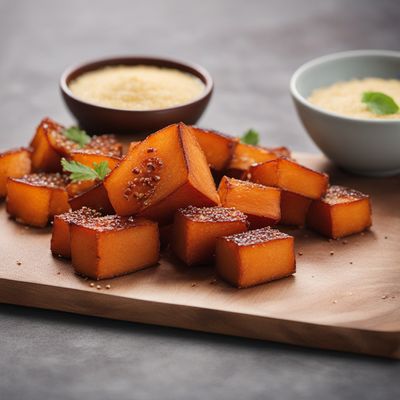
Recipe
Estonian-inspired Kappamaki Roll
Savory Estonian Seaweed Roll: A Fusion of Japanese and Estonian Flavors
4.5 out of 5
This recipe combines the traditional Japanese Kappamaki roll with Estonian influences, resulting in a unique fusion dish that showcases the flavors of both cuisines.
Metadata
Preparation time
20 minutes
Cooking time
N/A
Total time
20 minutes
Yields
4 servings
Preparation difficulty
Easy
Suitable for
Pescatarian, Dairy-free, Gluten-free, Nut-free, Low-fat
Allergens
Fish (herring), Seaweed (nori)
Not suitable for
Vegan, Vegetarian, Paleo, Keto, High-protein
Ingredients
In this Estonian-inspired version of Kappamaki, we incorporate pickled herring and dill, which are traditional ingredients in Estonian cuisine. These additions provide a unique flavor profile and a nod to the Estonian culinary heritage. We alse have the original recipe for Kappamaki, so you can check it out.
-
2 cups (470ml) sushi rice 2 cups (470ml) sushi rice
-
4 sheets of nori seaweed 4 sheets of nori seaweed
-
1 cucumber, julienned 1 cucumber, julienned
-
4 pickled herring fillets, thinly sliced 4 pickled herring fillets, thinly sliced
-
Fresh dill, for garnish Fresh dill, for garnish
Nutrition
- Calories (kcal / KJ): 250 kcal / 1046 KJ
- Fat (total, saturated): 2g, 0.5g
- Carbohydrates (total, sugars): 52g, 2g
- Protein: 6g
- Fiber: 2g
- Salt: 1g
Preparation
-
1.Cook the sushi rice according to package instructions and let it cool.
-
2.Place a sheet of nori seaweed on a bamboo sushi mat.
-
3.Wet your hands with water to prevent sticking and spread a thin layer of sushi rice evenly over the nori, leaving a small border at the top.
-
4.Arrange a line of cucumber strips and pickled herring slices along the bottom edge of the rice.
-
5.Using the bamboo mat, roll the nori tightly, applying gentle pressure to ensure a compact roll.
-
6.Repeat the process with the remaining ingredients.
-
7.Slice each roll into bite-sized pieces.
-
8.Garnish with fresh dill.
Treat your ingredients with care...
- Sushi rice — Rinse the rice thoroughly before cooking to remove excess starch and achieve a fluffy texture.
- Nori seaweed — Ensure the shiny side of the nori faces down when assembling the rolls to prevent sticking.
- Pickled herring — Pat the herring fillets dry before slicing to prevent excess moisture in the roll.
- Cucumber — Remove the seeds from the cucumber to avoid excess moisture in the roll.
- Fresh dill — Use fresh dill for the best flavor and aroma.
Tips & Tricks
- To make the rolling process easier, wet the knife with water before slicing the roll.
- Experiment with different pickled herring flavors, such as mustard or onion, to add variety to the rolls.
- Serve the Kappamaki rolls with soy sauce and wasabi for an extra kick of flavor.
- If you prefer a vegetarian version, substitute the pickled herring with marinated tofu or roasted vegetables.
- For a more Estonian touch, serve the rolls with a side of traditional Estonian rye bread.
Serving advice
Serve the Estonian-inspired Kappamaki rolls as an appetizer or as part of a sushi platter. They can also be enjoyed as a light lunch or snack.
Presentation advice
Arrange the sliced Kappamaki rolls on a platter, garnished with fresh dill sprigs. The vibrant green color of the seaweed and the pink hues of the pickled herring will make the dish visually appealing.
More recipes...
For Kappamaki
For Japanese cuisine » Browse all
More Japanese cuisine dishes » Browse all

Gari
Gari is a type of pickled ginger that is commonly served with sushi.

Tsukisamu anpan
Tsukisamu anpan is a traditional Japanese sweet bread filled with sweet red bean paste. It is a popular snack in Japan and is often enjoyed with...

Tamagodon
Rice bowl with scrambled eggs and toppings
Tamagodon is a traditional Japanese dish that is perfect for breakfast or lunch. It is a simple yet delicious dish that is easy to make and packed...
More Estonian cuisine dishes » Browse all

Sült
Estonian Pork Roast
Sült is a traditional Estonian dish made with pork and served cold.

Rosolje
Rosolje is a traditional Estonian salad that is typically served as a side dish or appetizer. This dish is made with a variety of boiled...

Asuparabekon
Bacon-Wrapped Asparagus
Asuparabekon is a Japanese dish that combines asparagus and bacon in a delicious and savory way. The dish is easy to make and can be served as an...








